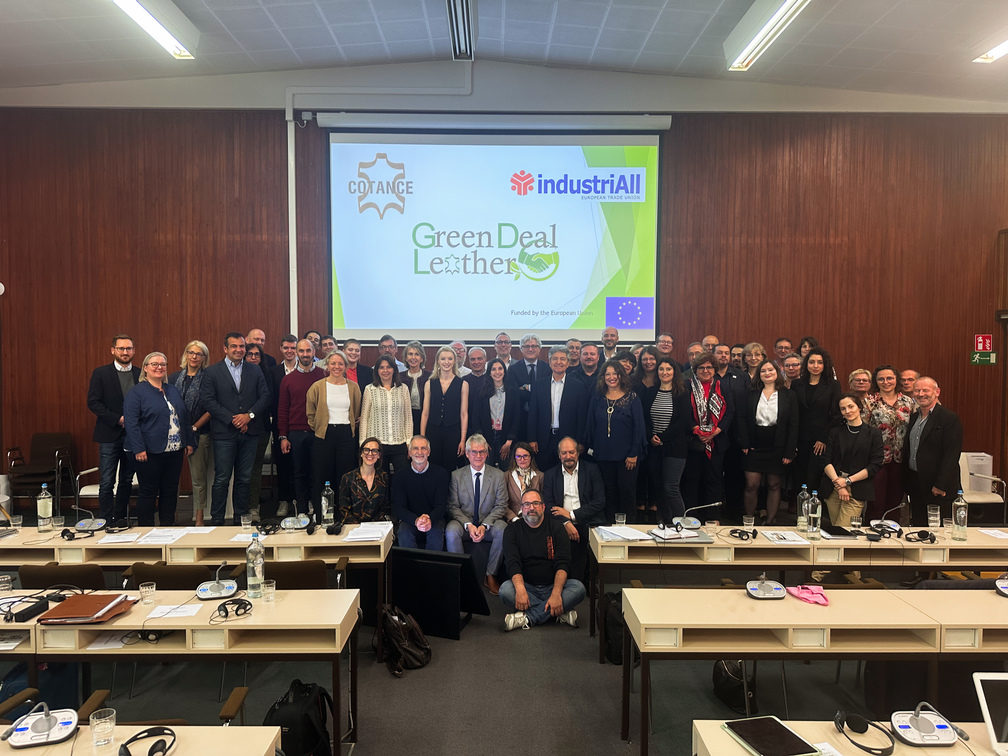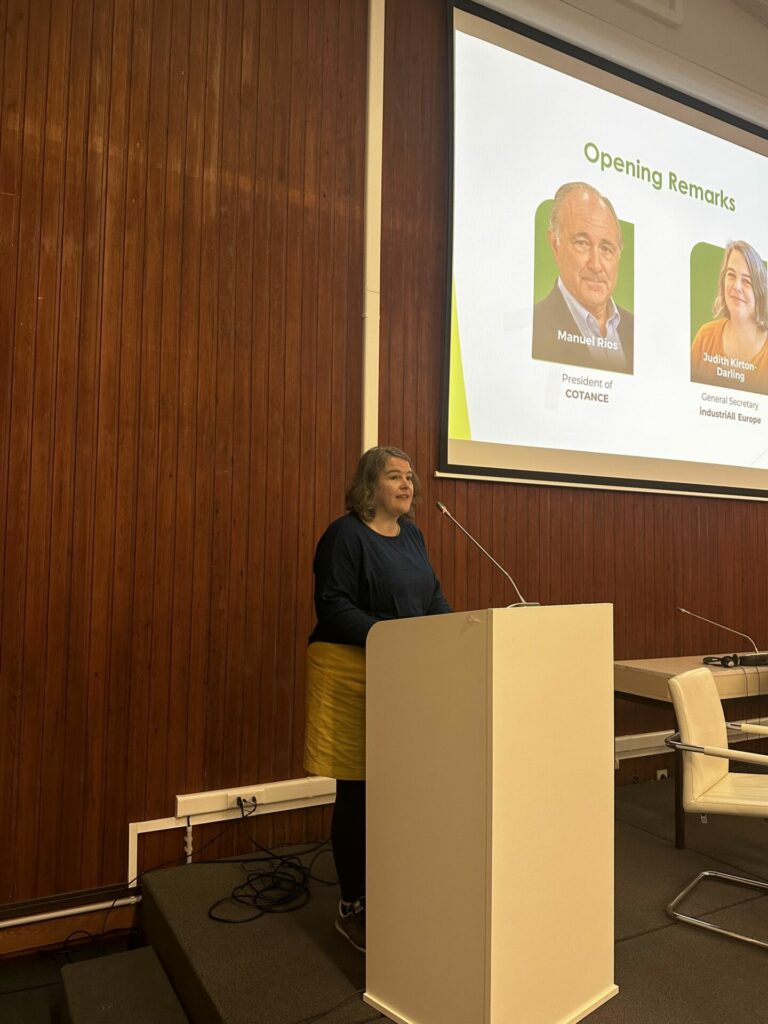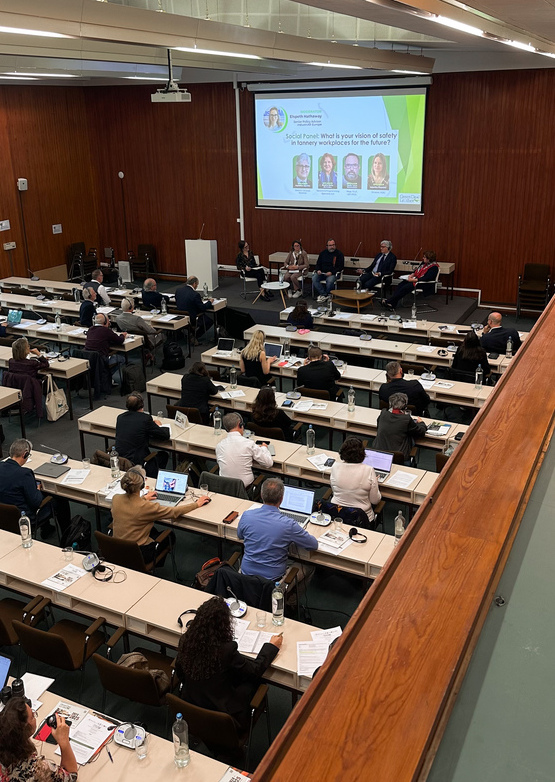Europe is renowned not just for its art, cuisine, or culture, but also for its quest for sustainability. One example is the European tanning and leather sector, which has become a business card of European craftsmanship and ESG excellence.
Let the numbers tell a story: the leather industry in Europe generates an impressive annual turnover of nearly EUR 8 billion, establishing Europe as the world's largest luxury leather supplier and accounting for 30% of the global leather industry's turnover. European tanners generate wealth and employment in 40,000 enterprises downstream and some 2 million people, with just 30,000 direct jobs.
So what explains the success of the European leather industry, as reflected in these numbers? Putting excellence - both social and environmental - at the heart of tanning values and strategies. This means that European leather represents not only a perfect blend of traditional craftsmanship and modern technology, but also meets the highest social and environmental standards with social dialogue at its heart.
"Once you acquire a leather item, you understand real quality; once you join the leather industry, you're in it for life," says COTANCE Secretary General, Gustavo González-Quijano. He joined COTANCE in 1987 and was captivated by the material's beauty, its history of sustainability and its potential for the circular economy, which has kept him engaged ever since. "However," he notes, "the public perception of the leather industry is not favourable, often linked to severe issues like poor working conditions and environmental pollution”.
“While this may be true in some poorly regulated countries or in countries where regulations are poorly enforced, it is important to recognise that this is not the case in Europe. In addition to having to abide to one of the World’s most stringent regulatory frameworks, European tanners prioritise their employees and the planet. The Green Deal Leather Project substantiates this commitment."
Leather production is a complex business activity – with elements on which the industry has little influence, such as the quantity of animal hides and skins, as the offer is driven by meat consumption - to those on which it can act, such as tanning processes and worker well-being.
European tanneries have proactively driven improvements in the processes they control: investing in reducing water and chemical use, enhancing recycling efforts and improving occupational health and safety. Yet, this progress is not sufficiently known by the general public. This gap led to the launch of the Green Deal Leather Project, which undertook research to provide reliable benchmarks and performance metrics, revolutionising industry standards across Europe and setting new global benchmarks for sustainable leather production with decent and safe working conditions.
The two-year EU-funded Green Deal Leather (GDL) project has, for the first time, provided comprehensive data on workplace safety within EU tanneries, detailed in the "Injuries/Incidents at the Workplace" study released in Lineapelle/Milan on 19 September, 2023. Additionally, the project unveiled findings on the carbon footprint of leather in the "Carbon Footprint of European Bovine Leather" study, presented at the Final Conference in Brussels on 16 May. Both studies highlighted the industry’s environmental and social credentials, providing tanneries with guidance to enhance their sustainability.
The main insights on occupational health and safety include:
- Tannery-related accidents in EU countries surveyed (Italy, Spain, France, Germany, Portugal, Hungary, and Austria) declined by 16%, from 1,317 in 2019 to 1,102 in 2021.
- However, with an incidence rate of 3.2% in 2021, 15% on the way to/from work, and over 90% of recorded accidents being qualified as of "minor" severity, there is still room for improvement.
Judith Kirton-Darling, General Secretary of industriAll European Trade Union said at the Green Deal Leather Final Conference:
"Good occupational health and safety practices in the workplace, with ongoing training and checks, are essential to keep tannery workers safe. Social dialogue is key, and trade unions and workers' representatives must be able to highlight any issues to management and know that they will be acted on swiftly. These preliminary results are a baseline and now we must work together to achieve zero accidents."
The main insights into the environmental impact include:
- Calculating leather's carbon footprint is a complex exercise that requires a thorough understanding of the tanning industry, its processes and products.
- The result obtained with the ECO2L method indicates an average of 8kg of CO2 per m2 of bovine leather in EU tannery processes.
- This figure can vary based on specific characteristics of the leather, such as thickness and performance requirements. Therefore, since each batch of leather is made to order, customers have the opportunity to influence the eco-design of their leather products.
- Excluding the impact of livestock breeding reveals the actual footprint of leather tanning and the importance of chemicals used during the tanning process, but also that replacing one chemical with another that has a lower carbon footprint does not always result in overall improvement.
Mr Manuel Rios, President of COTANCE: "Through the Green Deal Leather project, COTANCE continues to equip European tanners with the tools and intelligence needed to progress towards a more sustainable future. We believe that transparency is key to advancing our social and environmental credentials and dispelling common misconceptions about leather. We are proud to undertake this journey hand in hand with our social partners.”
In brief, the Green Deal Leather project showed that the European social partners continue to work together to ensure that the European tanning and leather industry is the safest and greenest in the world. However, this is just the start and we need tanneries across the world to step up and ensure that production is sustainable, circular and safe for workers.
European social partners insist that exceptional tanning craftsmanship can coexist with strong environmental and social responsibility.
So, next time you're deciding between leather and another material, remember that choosing European leather not only offers a high-quality experience that you can enjoy for a long time, but also delivers a product crafted with the utmost care for both employees and the environment.
European leather is your sustainable choice, discover more here.
By COTANCE and industriAll European Trade Union
About
COTANCE, the Confederation of National Associations of Tanners and Dressers of the European Community is the representative body of the European Leather Industry, gathering over 95% of European tanneries.
European leather production, known for its rich heritage and high-quality craftsmanship, is a key player in the circular economy by transforming by-products from milk, meat, and wool production. The sector includes 1,600 leather companies, employing directly around 33,000 workers, generating a turnover of nearly EUR 8 billion. Globally, European leather represents 30% of the world leather industry's turnover.
IndustriAll European Trade Union represents the voice of 7 million men and women working in supply chains in manufacturing, mining and energy sectors across Europe. We aim to protect and advance the rights of the workers. Our federation has 181 trade union affiliates in 38 European countries. Our objective is to be a powerful player in the European political arena vis-à-vis European companies, European industries, employers’ associations and European institutions.



